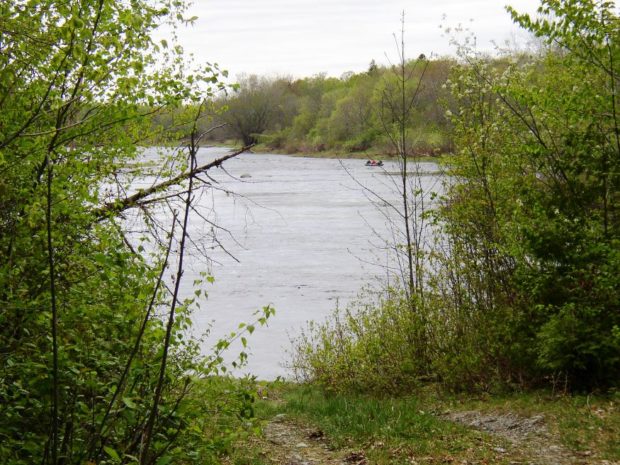
| Year | Population |
|---|---|
| 1970 | n.a. |
| 1980 | 281 |
| 1990 | 246 |
| 2000 | 213 |
| 2010 | 174 |
| Geographic Data | |
|---|---|
| N. Latitude | 45:38* |
| W. Longitude | 68:40* |
| Maine House | District 11 |
| Maine Senate | District 30 |
| Congress | District 2 |
| Area sq. mi. | (total) n.a. |
| Area sq. mi. | (land) n.a. |
| Population/sq.mi. | (land) n.a. |
| County: Penobscot *estimated from several sources
Total=land+water; Land=land only |
|
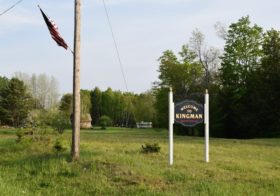 Kingman is an unorganized township in Penobscot County. The area was organized as McCRillis’s Plantation in 1859, and reorganized as Independence Plantation in 1866. It was incorporated as a town on January 25, 1873 from the former McCrillis and Independence Plantations.
Kingman is an unorganized township in Penobscot County. The area was organized as McCRillis’s Plantation in 1859, and reorganized as Independence Plantation in 1866. It was incorporated as a town on January 25, 1873 from the former McCrillis and Independence Plantations.
On April 13, 1935 it surrendered its incorporation remaining unorganized until later that year when it reorganized as a plantation in July. This status was short lived and on February 22, 1945 it again surrendered its local government to become an unorganized township.
One of the earliest settlers was William Horton from Halifax, Nova Scotia in 1859 who established a farm.
According to the Gazetteer of Maine, in 1886,
The settlements are along the Molunkas road, and at the village on the Mattawamkeag, near the centre of town. There are here a large sole-leather tannery of F. Shaw & Brothers, a saw-mill for long and short lumber, one for shingles, and a steam-mill making short lumber.
The increase in population has recently been considerable [185 in 1870; 546 in 1880], and the town bids fair to become an important one.
In the early 1870’s the firm of Shaw and Kingman built a sole-leather tannery and when the town was incorporated, Mr. R. S. Kingman’s name was attached to it. It is hard to imagine that here once stood a tannery which was referred to in 1892 as one of “two of the largest tanneries in the United States” both owned by Romanzo Kingman. Kingman, together; with William and Francis Shaw, founded the tannery in the late 1860s and together built the house which they shared, being bachelors at the time.
Mr, Kingman commissioned a “finely Italianate residence” in 1871-1872.
With the passing of the tannery, no other business, and the Depression placing additional burdens on the population, the voters decided to dissolve the town government in 1935.
The 1940 census showed another sharp drop, then a continuing loss through 2010.
The St. James Church that was active in 2003 was no longer active in 2018 with a “for sale” sign on the property.
The village of Kingman lies east of Mattawamkeag at the intersection of the Mattawamkeag River, Maine Route 170 and the Canadian Railway.
It hosts a portion of the Mattawamkeag River Wildlife Management Area, along the Mattagodus Stream in the southeast of the township.
Additional Resources
Chadbourne, Ava Harriet. Maine Place Names and The Peopling of its Towns.
Beard, Frank A. and Bette A. Smith. Maine’s Historic Places: Properties on the National Register of Historic Places. Camden, Me. Down East Books. 1982, p. 104.
Kingman (Me.). Annual Report of the Municipal Officers of the Town of Kingman, Maine. Kingman, Me. The Town. [University of Maine, Raymond H. Fogler Library, Special Collections: 1903; 1908-15; 1923-27; 1928-30; 1932-34; 1937/38; 1942/44; Maine State Library: 1899; 1904; 1906/07-1933/34; 1936/37-1937/38; 1943-1944]
*Maine. Historic Preservation Commission. Augusta, Me. Text and photos from National Register of Historic Places: http://pdfhost.focus.nps.gov/docs/nrhp/text/82000775.PDF and http://pdfhost.focus.nps.gov/docs/nrhp/photos/82000775.PDF
Varney, George J. A Gazetteer of the State of Maine. 1886. pp. 302-303.
National Register of Historic Places – Listings
Kingman, Romanzo, House
[Main Street] “The visitor to Kingman today [1981] is at once struck by this sophisticated and well designed Italianate house in a village which appears to be in a state of decline.” That was the flattering comment by the Maine Historic Preservation Commission in 1981 marveling at the Kingman House. Unfortunately, the house was destroyed by fire in about 2005 or earlier according to a person who had lived her long life in Kingman and spoke to a representative of the Encyclopedia in 2018.
According to the nomination narrative,
It is hard to imagine that here once stood a tannery which was referred to in 1892 as one of “two of the largest tanneries in the United States” both owned by Romanzo Kingman. Kingman, together; with William and Francis Shaw, founded the tannery in the late 1860s and together built the house which they shared, being bachelors at the time. Although the factory eventually became known as F. Shaw and Brothers, the town, then a plantation, adopted the name of Kingman reflecting his popularity.
The house had always been known as the Romanzo Kingman house. Kingman moved west in the mid-1870s and founded another tannery in Wisconsin while retaining part ownership of the one in Maine. In the 1920s, a disastrous fire destroyed the tannery in Kingman and many homes, a blow from which the town never recovered. Now, with dwindling population, Kingman lies quietly in a remote rural area but tragically has lost this one high style residence as a symbol of its former days of prosperity.* [Frank A. Beard photo]


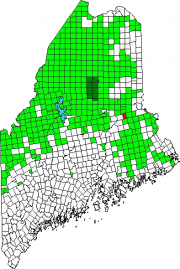
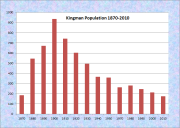
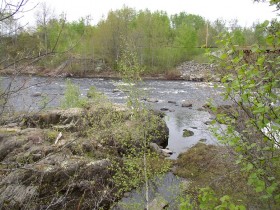
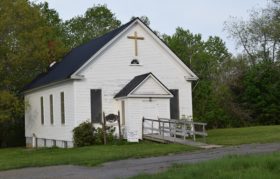

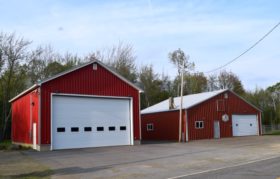
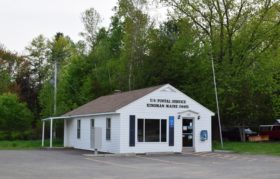
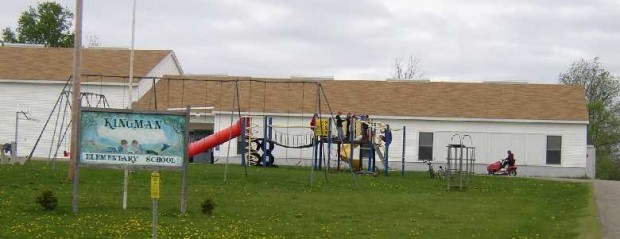
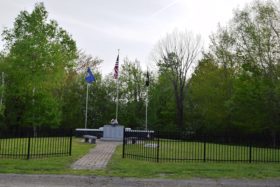
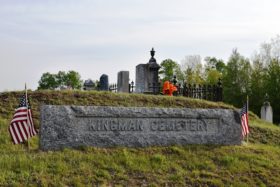
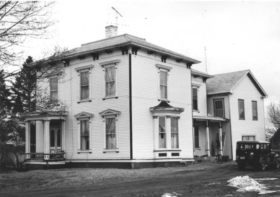
My father was a Methodist minister in Danforth in the late 1940’s until December 1951. He also served a church in Kingman. I remember going there every Sunday for an evening service. Are there any records of the church? Was it Methodist or a community church? How long did it continue after we were reassigned?
Thanks.
Read Daniel Mark Epstein’s “What Lips My Lips Have Kissed” about Edna St. Vincent Millay. Around page 58 he writes about Kingman, its rollicking nightlife (imagine!), and its Methodist Church. Epstein is a wonderful writer.